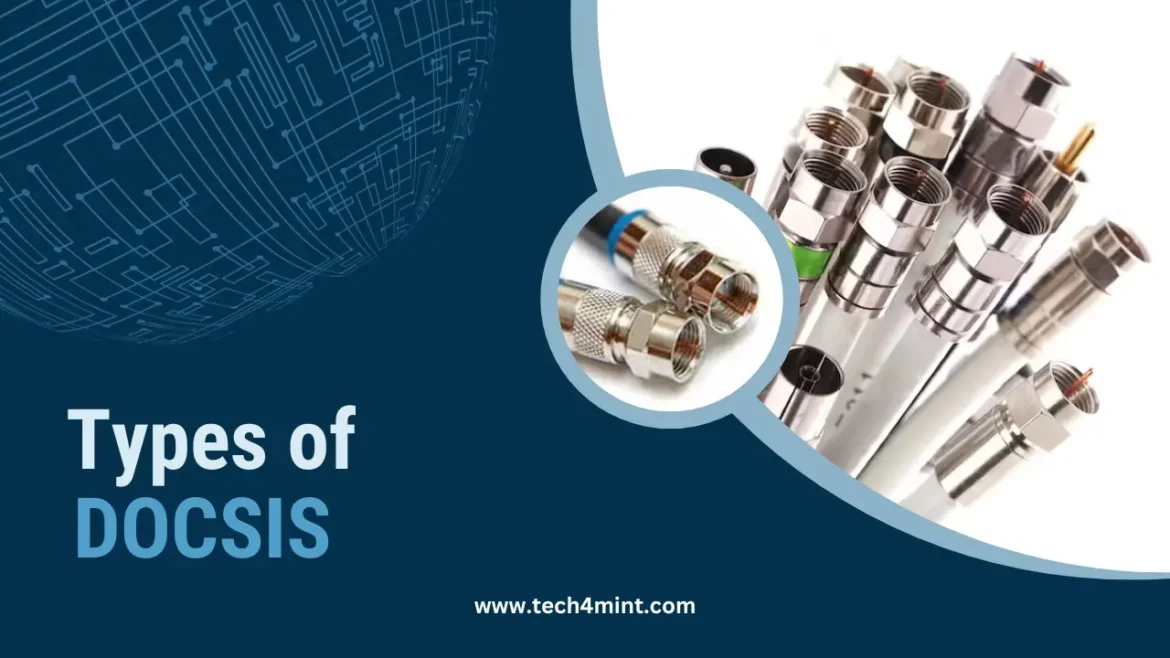Table of Contents
ToggleDOCSIS 2.0 vs DOCSIS 3.0 DOCSIS 3.0 vs DOCSIS 3.1 DOCSIS 3.1 vs DOCSIS 4.0
As we navigate through the various versions/types of DOCSIS, each iteration brings forth new capabilities, higher speeds, and enhanced security and performance.
DOCSIS 1.0 (High-Speed Internet Access)
-
- Specification first issued on March 26, 1997
- 30-million DOCSIS modems shipped worldwide as of Q3-2003
- High speed Internet Access with best effort service
- DOCSIS 1.0 offered a downstream data rate of up to 38 Mbps and an upstream rate of 9 Mbps.
- Time Divisional Multiple Access (TDMA)
-
- Baseline Privacy Service for authentication
- Specification first issued on March 26, 1997
DOCSIS 1.1 (Telephony, Gaming, Streaming Media)
-
- Specification first issued on March 11, 1999
- Quality of Service (QoS)
- Enhanced Service Security (BPI+)
- Operations tools (SNMP)
- IP Multicasting
- Fragmentation and Concatenation
- Payload Header Suppression (PHS)
-
- Backward compatible with DOCSIS 1.0
- Specification first issued on March 11, 1999
DOCSIS 2.0 (Capacity for Symmetric Services)
-
- Specification first issued on December 31, 2001
- More upstream capacity than DOCSIS 1.0 and 1.1
- doubled the downstream data rate to 38 Mbps and pushed the upstream rate to 27 Mbps.
- Improved robustness against interference (A-TDMA and S-CDMA)
-
- Backward compatible with DOCSIS 1.0 and 1.1
- Specification first issued on December 31, 2001
DOCSIS 3.0 (Downstream and Upstream Channel bonding, IPv6)
-
- Specification first issued in early 2006
- this version facilitated downstream speeds of up to 1 Gbps and upstream speeds of 200 Mbps.
- Downstream and Upstream Channel bonding
- AES (Advanced Encryption Scheme)
- Support for IPv6
- Device mobility using IPv6
- Enhanced provisioning using IPv6 auto-configuration
- QoS for multicast traffic, Source Specific Multicast, IGMPv3
- Security: Early Authentication and Encryption (Prior or after Registration)
- Modular-CMTS (M-CMTS)
-
- Backward compatible with DOCSIS 1.0, 1.1 and 2.0
- Specification first issued in early 2006
DOCSIS 3.1: Gigabit Era
-
- DOCSIS 3.1 paved the way for gigabit speeds
- Rolled out in the early 2010s
- DOCSIS 3.1 boasted downstream speeds of 10 Gbps and upstream speeds of 1 Gbps.
- This version introduced advanced modulation techniques and error correction algorithms,
- optimizing the use of available spectrum and enhancing overall network efficiency.
-
- The introduction of orthogonal frequency-division multiplexing (OFDM) further contributed to the increased data rates and improved performance.
- DOCSIS 3.1 paved the way for gigabit speeds
DOCSIS 4.0: Towards the Future
-
- DOCSIS 4.0 is poised to take us beyond, with the potential to support downstream speeds of up to 40 Gbps and upstream speeds of 10 Gbps.
-
- This version emphasizes enhanced efficiency, lower latency, and improved network reliability, ensuring that cable operators can meet the evolving demands of a connected world.
-
- DOCSIS 4.0 is poised to take us beyond, with the potential to support downstream speeds of up to 40 Gbps and upstream speeds of 10 Gbps.
Conclusion:
DOCSIS technology has indeed come a long way since its inception, transforming the digital landscape and redefining our expectations of internet connectivity. With each version building upon the successes of its predecessor, DOCSIS has consistently adapted to the changing needs of consumers and the technological advancements of the era. As we embrace the era of DOCSIS 4.0, we can anticipate a future where the waves of connectivity continue to surge, connecting us at speeds and capacities once thought impossible.
